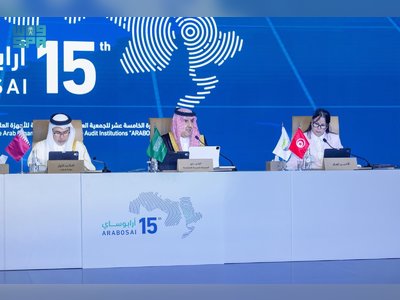
Behind the Enigma by John Ferris review – inside Britain's most secret intelligence agency
In July 2013 two GCHQ representatives arrived at the Guardian’s offices in Kings Cross, London. They brought a mysterious rucksack. In a windowless basement the pair supervised the destruction of laptop computers: three sweaty hours of bashing and grinding. The bits were fed into a microwave-like demagnetising box. Then the visitors left.
Under legal threat from David Cameron’s government, the Guardian had agreed to destroy top secret documents provided by the whistleblower Edward Snowden. The exercise was part pantomime, part Stasi. Duplicate copies of the Snowden files, as the Guardian’s then editor Alan Rusbridger told No 10, sat on a server in New York.
The files represented the most serious leak in GCHQ’s history. And something of a PR disaster. The agency and its mighty US counterpart, the NSA, had been secretly collecting the data of their own citizens. This included emails, text messages, browsing histories and much else. The ambition was to capture everything. All of the signal all of the time, as one slide put it.
With the rise of the internet GCHQ had moved from targeting foreign adversaries to snooping on practically everybody. It argues that the bulk collection of our electronic lives is legal and necessary, if terrorists and serious criminals are to be defeated. The agency hired lawyers and press officers. It approached a Canadian academic, John Ferris, to write an authorised centenary account.
The result – Behind the Engima – should be a thrilling affair. Ferris was granted unique access to much of GCHQ’s archive: 16m documents stored in the basement of the “Doughnut”, the agency’s Cheltenham HQ. He was allowed to talk to staff on deep background. Certain topics were out: post-1945 diplomatic traffic, material from after the cold war, anything on current methods.

Alas, the book is very much an institutional history, deeply technical in places and largely lacking in colour or human drama. Ferris is no Ben Macintyre – author of a string of non-fiction espionage page turners – or Christopher Andrew, whose entertaining and brick-shaped official history of MI5, The Defence of the Realm, came out in 2009. A drier authorised account of MI6 ends in 1949.
For most of its 101-year existence GCHQ has operated from the shadows. Margaret Thatcher avowed its intelligence function only in 1982; even today the agency is understandably nervous about identifying the linguists and mathematicians who work there. Its post-Snowden push towards what director Jeremy Fleming calls “greater transparency” clearly has limits.
Ferris deals with the Snowden affair in a few brief pages. We don’t discover why a 29-year-old NSA contractor sitting in Hawaii was able to download thousands of classified British documents and to give them to journalists. The leak, you imagine, led GCHQ to reassess its intelligence sharing relationship with the US. Whether anyone was fired or what conclusions were drawn remain a mystery.
The Snowden crisis stunned GCHQ, Ferris admits. He thinks there is no alternative to its current system of mass suspicionless surveillance. Not that GCHQ would use these terms: it says the billions of items collected from UK citizens every day are mostly unexamined. Other states have few scruples about hoovering up personal information, he notes. He dismisses privacy concerns as “conspiracy theories”, tedious to all but the “chattering classes”.
The book is at its best when sifting the role of signal intelligence (Sigint) in the Falklands war and other late imperial conflicts such as Indonesia and Palestine. GCHQ broke Argentine military ciphers early on. The agency warned Thatcher that Argentine forces were heading for Port Stanley, the Falklands’ capital. Once the invasion happened, it listened in on Argentine commanders as a task force set off for war.
According to Ferris, Sigint underpinned the British decision to torpedo the General Belgrano as it left the exclusion zone. Some 323 Argentinians died when it sank. Thatcher declined to publish intelligence that showed the cruiser was planning to turn around and to attack British warships. The sinking was a “counter-ambush of an ambush”, he writes. The Reagan administration knew about the secret intercepts, and backed London.
Much of GCHQ’s work during the cold war was unglamorous. The agency’s stations around the world spent decades spying on the Soviets. Personnel living on Ascension Island, in the South Atlantic Ocean, dreamed of fresh eggs in between shifts of morse code. They relieved boredom by fishing. In Berlin, a base for watching the Warsaw Pact, RAF pilots carried out low level air missions across East Germany. They snapped photos from hand-held cameras shoved out of a window.
Behind the Enigma also chronicles the role played by women in secret operations, most of it in support roles. Women made up three quarters of the 10,000 staff at Bletchley Park. Few were codebreakers. (One, Emily Anderson, led the assault on Italian fascist traffic.) After the war, numbers fell. GCHQ’s management held “latent sexist views” into the late 1980s, Ferris says. The first woman joined GCHQ’s directorate in 2006.
A theme revealed by Snowden’s leak is GCHQ’s fear that the White House might one day pull the plug on “UKUSA”. The intelligence pooling arrangement, agreed in 1945, underpins the “special relationship”. Anxiety about disappointing the Americans played a role in Thatcher’s decision in 1983 to ban unions at GCHQ following a series of strikes. Most staff didn’t object. A £1,000 payment sparked a local economic boom. But the affair harmed it, Ferris suggests, with GCHQ a “pawn in Thatcher’s game”.
GCHQ plans to release some of its classified files over the next two to three years. The majority – including positive vetting records – will never see the light. Behind the Enigma is a sanitised version of the agency’s history, comprehensive and yet strangely unsatisfying. Donald Trump isn’t mentioned – a counter-intelligence nightmare whose daily brief includes GCHQ material. The modern human stories of those still working on the intelligence frontline have yet to be told.











